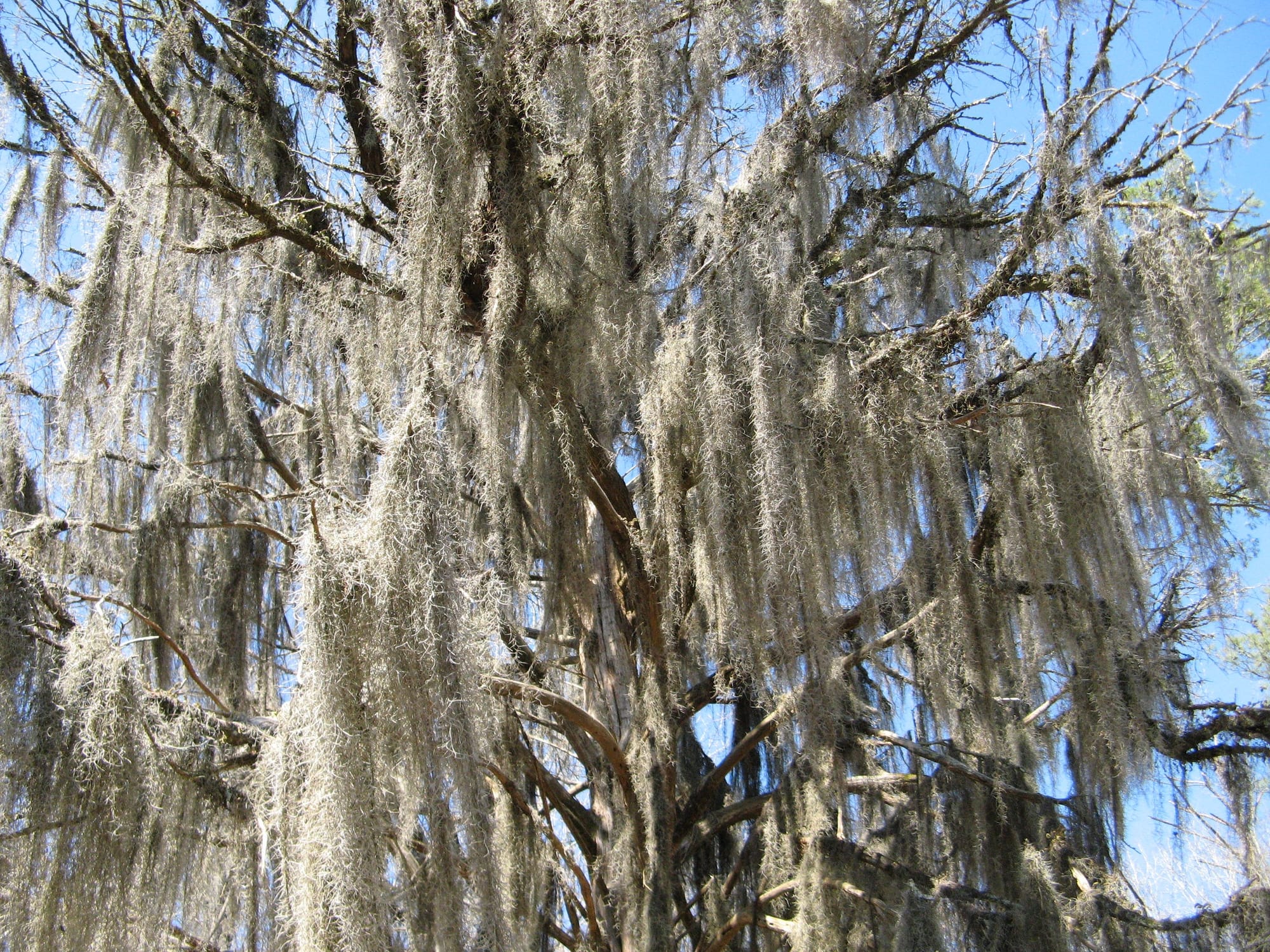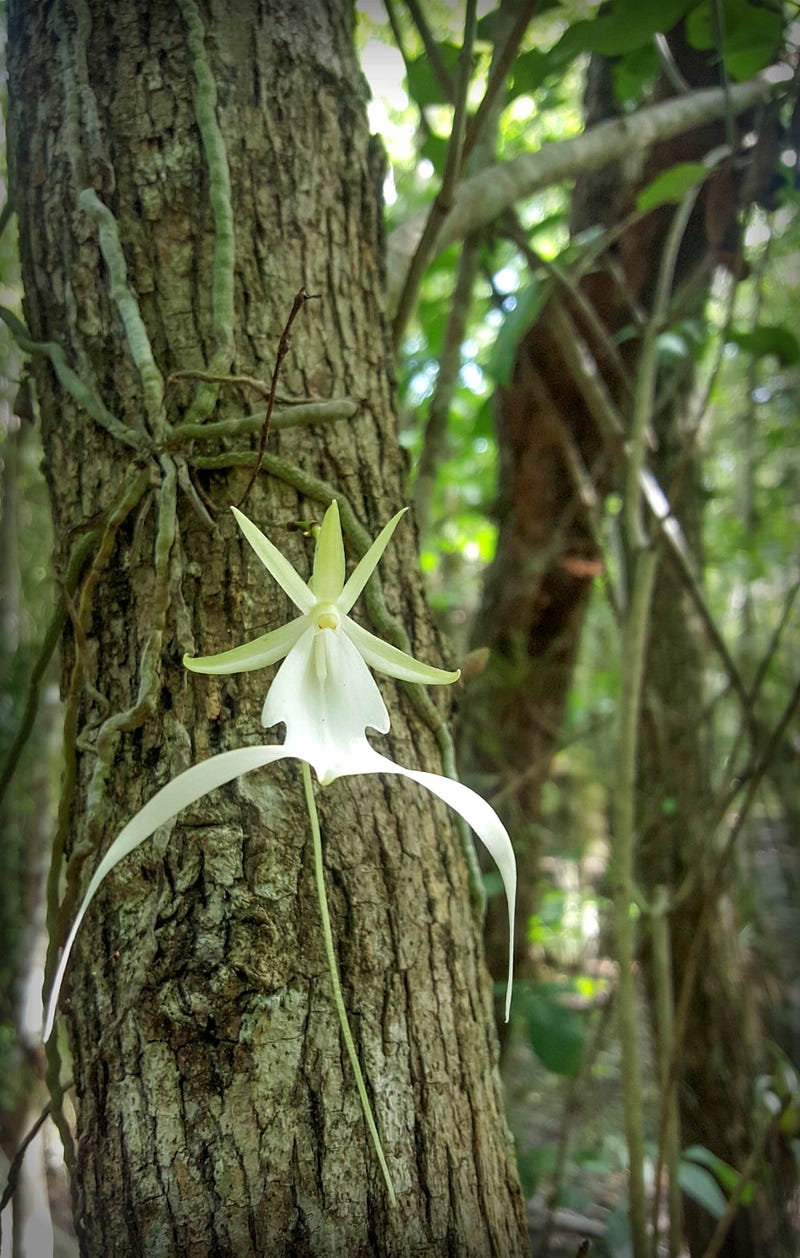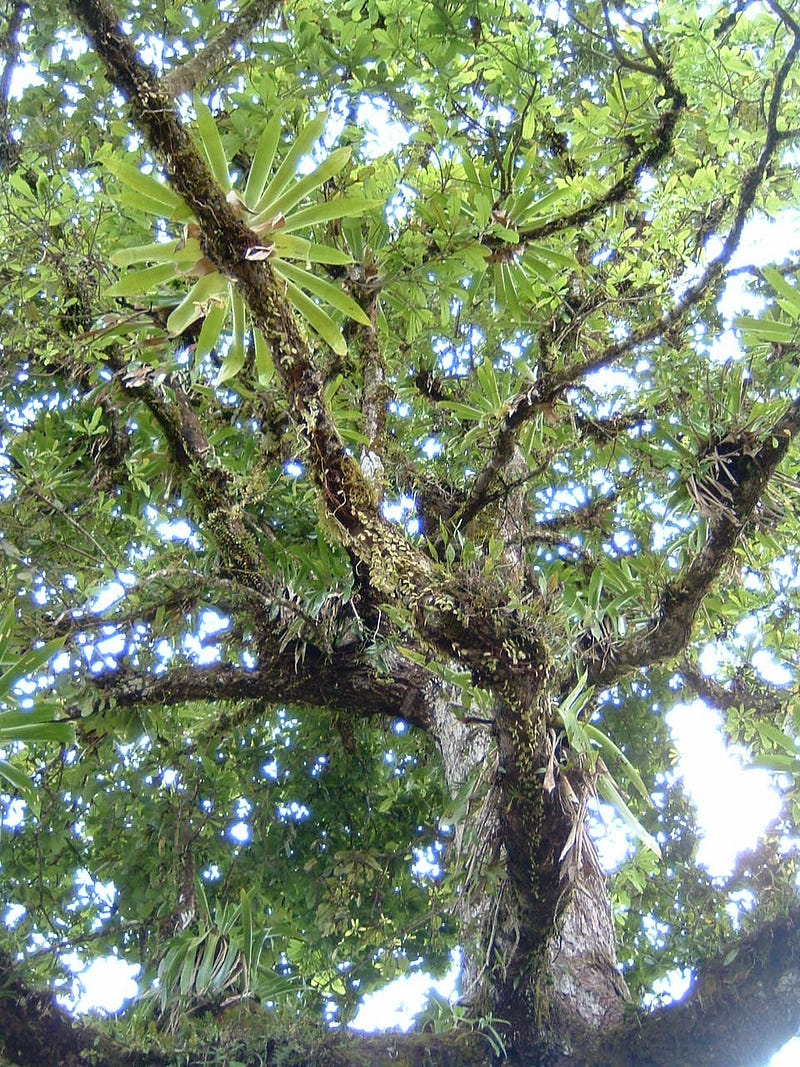
This week, we’re talking about plants. Specifically, a group of plants that got its name specifically because of the symbiotic relationships they form with other plants. This group is known as epiphytes (derived from the Greek for ‘upon plants’), which is the name given to any plant that grows commensally on another plant. Because these plants do not root themselves in the ground, they are sometimes called ‘air plants’, although there are some aquatic epiphytes as well.
There are over 27,000 species of plants that are considered epiphytes. These span all major taxonomic plant groups, as the title describes how they grow, not what they are related to. Some of the most well known epiphytes come from the bromeliad family. One example is Spanish moss, Tillandsia usneoides, seen hanging from the tree branches in the picture above. Not all bromeliads are epiphytic (the family also includes, for example, the pineapple, Ananas comosus). There are also many epiphytic orchids and ferns. In fact, one of the rarest and most beautiful species can be seen here in Florida: the ghost orchid, Dendrophylax lindenii.

Epiphytes don’t have to be small, either. Some of them can grow to be larger than a person, like the fallen one below (that’s not me in the picture, but a friend who was studying bromeliads in Costa Rica at the time).

While many epiphytes enter into symbiotic relationships with animals, especially flowering ones like I talked about a few weeks ago, today I want to focus on the relationship between the epiphyte and its anchor point. These plants do not put there roots in the soil. Instead, they use the surface of another plant, often a tree of some kind, for support. They gather water and nutrients from the air, rain, or debris that builds up around them. In tropical climates, where humidity is high and the plant can easily get all the water it needs from the air, trees are often covered with epiphytic plants, leaving little exposed bark.

The benefits of this relationship for the epiphyte are several-fold. Firstly, their root systems are not strong and anchoring themselves to another plant instead of the ground gives added stability. In addition, this ability allows plants that would not be able to grow very high to still reach the forest canopy and capture needed light for photosynthesis. This added height also protects them from ground-based herbivores (those that can’t climb, at least).
What does the anchor tree get from this? Because we’re still talking about commensalism, the answer should be nothing. There are similar species of plants that actually draw nutrients from their hosts (an example of parasitism), but the term epiphyte is specifically for plants that only use the host plant for support. There are also about a dozen species in the genus Ficus (figs) that are colloquially known as ‘strangler figs’ that act initially as epiphytes. However, their roots continue to grow down until they reach the soil. At that point, the fig becomes more like a tree and some of them ‘strangle’ the original host tree to death.
Most epiphytes do not have such an adverse effect on their hosts. However, there is still some debate in the scientific community about whether they are truly commensal, even if they do not steal nutrients. As the last picture shows, many trees can be covered in epiphytes and the sheer weight of them can occasionally cause tree limbs to break. Larger epiphytes can also compete with the host plant for sunlight. In the end, much like the remora, it can be difficult to classify some symbiotic relationships into only one category.
By now, you are probably noticing that there are different type of symbiotic relationships based not just on which organism benefits, but also how. In this example, epiphytes receive a structural benefit. In lichen, the algae also receives a structural benefit, while the fungus receives a sustenance or food benefit. Think back to the earlier stories this season and see if you can classify the different types of benefits in each story. Going forward, look at the broader types of benefits (and detriments when we talk about parasitism) gained. In this way, it becomes easier to spot patterns throughout the natural world and understand why symbiosis can be so powerful. I hope to see you next time when we wrap up commensalism and finish the second of three parts to this season on symbiosis.